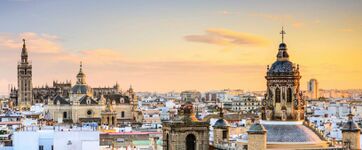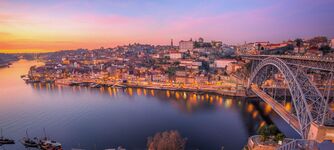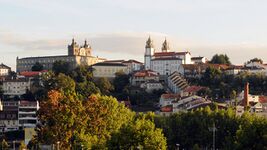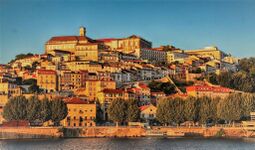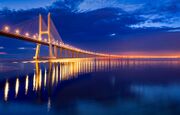Produzland
This article is incomplete because it is pending further input from participants, or it is a work-in-progress by one author. Please comment on this article's talk page to share your input, comments and questions. Note: To contribute to this article, you may need to seek help from the author(s) of this page. |
The Kingdom of Produzland [a] O Reino de Proáduseia | |
|---|---|
| Motto: "Um Reino Glorioso Construído Para Durar" | |
| Anthem: "Te despertar Próadus" | |
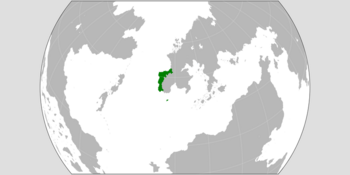 Official map of the Kingdom of Produzland | |
| Capital | Aatréam |
| Largest city | Aatréam |
| Official languages | Produz, Cabeçan |
| Recognised national languages | Produz |
| Recognised regional languages | Produz, Cabeçan, Achkadian |
| Ethnic groups (2011) | Produzmen 85.32% Aenians 5.26% Achkadians 3.63% Others 6.79% |
| Demonym(s) | Produzmen, Produz |
| Government | Parliamentary Constitutional Monarchy |
| Riccardo Bonadeo, YLP | |
| Kingdom | |
• Azloveiroan Independence from Aenícioa | May 29th, 667 |
• Establishment of The 2nd Kingdom of Produzland | March 4th, 1279 |
• Establishment of The 3rd Kingdom of Produzland | February 19th, 1925 |
• Establishment of the Federal Republic of Produzland | June 20th, 1928 |
• Restoration of the Monarchy, Establishment of the 4th Kingdom of Produzland | January 15th, 1980 |
| Population | |
• 2014 estimate | 48,121,184 (20) |
• 2014 census | 48,121,184 |
| Gini | 34.67 medium |
| HDI (2011) | 0.781 high |
| Currency | Escudo (ECU) |
| Date format | mmddyyyy |
| Driving side | right |
| Calling code | +55 |
| ISO 3166 code | PR |
| Internet TLD | .prd |
Produzland, officially, the Kingdom of Produzland (Produz: O Reino de Proáduseia), is an sovereign state in Greater Olympus. Produzland is located on the western half of the Orthurian Peninsula in Southwest Lira. Produzland borders the Aurum Ocean in the west, Amidia in the east, and Achkadia in the North-East, as well as Parthonopia. The Kingdom covers an area of XXXX square kilometers with an oceanic and mediterranean climate. It is a parliamentary constitutional monarchy with 48 million inhabitants (2014) and King Daniól I as king since 1980.
Around 455 a group of people known as Aenians invaded the Orthurian Peninsula, a sub-group of the Aenians were called the "Produss" as they moved to the 1st Kingdom of Produzland. Produzland had it's own empire up until then since 1537 when King Jose VIII gained the throne of the Kingdom of Amidia and Produzland absorbed Amidia creating the Produz Empire. The lands that are now Produzland was a province of the Orthurian Empire until 221, then in 490 the independent nation of Produzland split in 3 nations, Aenícioa, Traedusia, and Avdethela. Avdethela created it's own empire, and West Aenícioa split from Aenícioa to become Azloveiros. After the division of Avdethela in 1044 Azloveiros conquered most of Western Orthuria and created the Kingdom of Produzland in 1279. Then in 1810 Produzland had a War of Succession resulting in Otávio Boaventura II taking the throne and turning the empire into Produzland-Amidia. This empire was then split into Produzland, Amidia, Arencia, the Parthonopian states, with Achkadia getting Cabeça in 1925 after they lost the Olympic War. This resulted in a dictator seizing control of Produzland in 1928 and annexing Arencia and Cabeça in 1937. The dictatorship was removed in 1980 with the monarchy being restored and Produzland growing now being a main producer of trains, seafood, and luxury items.
Produzland is ones of the leading countries in seafood production and luxury items with companies like Tradusland and Ludovico, Gonçalo Shipping, Andrade Luxuries, Rego-Dalgarno Hotel Company, and Vítor Loureiro. Manufacturing is the dominant force in the country with significant contributions from refining. The parts made in Produzland are both exported and made into finished products, though the economic goal of the nation is to export the majority of parts out of the country, while keeping/importing some parts for local manufacturing before exportation. Imports include raw materials as well as finished goods and services from other countries. The resources on hand and the priorities of Produzland influence what type of refinement and manufacturing will take place. Produzland's manufacturing specialties include Train Engines, Train cars, and electrical equipment.
Etymology
The Aenians referred to western Orthuria as "Produsland", or Proáduseia in Produz, named after Proáduça, which is the Aenian word for carrots, a plant which was commonly grown in Western Orthuria. The Aenian people inhabiting the area were than referred to as "Proádus", or Produs, which the word Produs would eventually evolve into 'Produz' over time. The state that is now Produzland was originally called The Kingdom of Azloveiros until 1278. The Produs people, or more specifically King Vicente II of Azloveiros, renamed their kingdom after the 1st Kingdom of Produsland long ago in 1279.
The standard way to refer to a citizen of Produzland is as a "Produzman."
History
Early History (-490)
The provinces of the Orthurian Empire were split into regions that formed the provinces, Produsland was divided into Avdethela, Aenícioa, and Traedusia. These regions were in charge of building the cities in them to pay taxes to the provinces which would pay that money to the central Orthurian government. Avdethela got an area around a small bay they though would make a great capital for Produsland. They established Addreium (modern Aatream), which the regions agreed on and with Addreium being the largest city now in Produsland and it became the capital of the province. Produsland then left the empire in 221AD. Inside Produsland, the regions themselves wanted independence after the emperor of Produsland turned the regions into provinces of Produsland and with the Aenian majority in Produsland that made the definition of "Produs" shift from people inhabiting Produsland to this new subgroup of the Aenians. Then in 490AD, the emperor abdicated granting the regions independence.
Azloveiros
The Produsmen who migrated to the south created bigger and better cities than the north, establishing Portuária and Cojazeira as their biggest cities, though as the centuries went on, the northern mostly Aenian Produsmen and southern mostly native Produsmen grew farther apart. In 768AD the northerners tried to compete against not only the south but a city near the border between the south and north called Aatréam, previously Addreium. Aatréam was built by Avdethela which covered much of central-west Orthuria after conquering it after it gained independence from Produsland, but connected to the sea by their port capital of Aatréam and the province of Sequeira cutting the northerners, off from Arencia in Baixa Azloveiros. Aatréam grew into a large city and was a competitor for the Produsmen. Though due to conflict between the west and east of Aenicioa, West Aenicioa had crowned their prince in 667AD installing the Cenéturas Dynasty after Jose Cenéturas I lead the transformation of West Aenícioa into Azloveiros. Then the countries that surrounded Avdethela formed a coalition on Avdethela and invaded on 4 fronts, after the country was divided, in the Treaty of Arencia the Kingdom of Amidia, or the country that made up southern Produsland at the time, got Upper Selzear, the Holy Liran Empire got Cabeça, the Kingdom of Amidia also got most of the large center of Avdethela, and Azloveiros got most of West Avdethela including the area surrounding Aatréam, but Aatréam remained a large city reduced just to a city state, the Principality of Azloveiros tried to compete with the Traedusia, what was once west Amidia, which had become an independent country not to long after the Treaty of Arencia, and Aatréam by establishing Lavoeira on the Avdethela River near Aatréam and the border between Azloveiros and Traedusia. Both Azloveiros and Traedusia became kingdoms in 1128 and 1092 respectively
Produs Wars of Unification (1267-1279)
In 1267, tensions were high between the neighboring kingdoms of Azloveiros and Traedusia, which would eventually finally be set off when Traedusian king Alfonso VIII died in battle against the Selçénese in the Battle of Mergulhe-O-Grande. Traedusia was terribly unprepared to replace the king with 3 month old Prince Enrique of the Rodaves, which gave Azloveiros the perfect chance to take over Anavede and all the south bay area, currently under Traedusian rule, and perhaps even all of the Kingdom of Traedusia. So in the summer of 1267, the Azloveiroan forces crossed the Avdethela River into Traedusia. Already dealing with internal issues, Traedusia was easily defeated and swept aside at Anavede, Gretia Novo, and Azevedo, until King Vicente II himself and his army arrived at the walls of Traedusian capital, Portuaria. Realizing the city and it's people could be eliminated, the Traedusians surrendered. Azloveiros gladly welcomed the Traedusians into the kingdom and poured heavy amounts of money into rebuildings northern Traedusia. After the stunning and swift defeat of Traedusia, Azloveiros gladly marched into and surrounded the city state of Aatream in 1269, to which it eventually fell after months of starving the city. The capital of Azloveiros was formally moved from Lavoeira to Aatream for the monarchs to live in the lavish castles of the city.
Soon after Azloveiros annexed Aatream, this worried the Aenians in the north about possibly Azloveiros taking Aenicioa into what appeared to be Azloveiros trying to resurrect the centuries old unified Produs kingdom. So in 1269, Aenicioa strengthened it's forces in the border region in Gaulesia. Now Azloveiros didn't intend to conquer Aenicioa even if it had been on the countries wish list, the sudden strengthening of the border worried the Azloveiroans who if Aenicioa could pressure and defeat them enough, all their hard work and bloodshed could be undone. So in January of 1270, Azloveiros officially went to war with it's northern neighbor. while Azloveiroans pressured to the north in aim of Rodaesa, the largest and most important city, the southern forces found a way through the Cinzento Forest in the winter of 1274, an unguarded area of land that broke right into the plains of southern Aenicioa and in sight of the capital Relâpago. So the forces of Azloveiros suddenly flooded into the forest to push through directly towards Relâpago. In one of the bloodiest battles in Produz history as they came out of the forest. The Azloveiroans approached the unguarded Relâpago. To which in 1275, Aenicioa accepted to unify under Azloveiros as the best terms the country could get. Regardless of Aenicioa's defeat, the people seemed happy joined Azloveiros and Traedusia in a bigger picture to unite the Produs.
The country kept the name Azloveiros for a short while, but the people that formally lived in the kingdoms that weren't originally part of Azloveiros weren't fond because it made them seem like they were conquered by them rather than unified, even if they were conquered, so King Vicente II of Azloveiros decided to rename the country to something that would take from the Produs's heritage and named the country after the long-gone unified state of Produsland. So in June of 1279 the country became the Kingdom of Próaduseia, or Produsland. The Traedusians, Aenians, Aatréanians, and Azloveiroans quickly merged there cultures together with intermarriages and eventually breeding out the minor differences. The Traedusians have been seizing small islands off the southern shore since their creation which gave the Produs their first taste of conquering for many years to come. The largest island, and farthest away, the Traedusians conquered was an island not too far away from the coast that they named Aloísio. Bringing rise to the almost 700 year long entity, the Produz Empire.
Produz Empire (1537-1817)
In 1525, Prince Jose of Produsland married a princess of a bordering nation, Amidia, after a while Jose VII became king of Produsland and his wife became queen of Amidia, though the queen of Amidia died with no children leaving Jose VIII with the crown of the Kingdom of Amidia, he ruled over both for a short while until he finally united the two kingdoms under Produs rule in 1537. He saw a chance now to become an emperor as he nowed ruled over a huge, powerful country, and he took it, he was crowned the first emperor of Produsland shortly after to rule over something called, the Produs Empire.
Over the course of the 16th and 17th centuries, the Produs Empire expanded it's influence heavily in Nori and it's southeastern islands. The first example being in 1543 when Jorge Adão da Coutinho landed in southern Kiteahu and established Fort Santa Ângela on an island he called Cavaco. Da Coutinho also landed in the eastern islands of modern Jashnagar a few years later, which he and his fleet gave it the name 'Jaixnágar'.
In 1559, Miguel João de Leitão and his ship the São Sebastião discovered a lot of the islands in the western half of the Jashnagari Archipelago. The next year in 1560, Luís Vaz Corte-Real saw modern Choclyic for the first time with Liran eyes which gave rise to an attempted colonization of the archipelago over the next decade which saw a hard fought conflict by the natives drove Produsland away from taking the islands, though they still kept minor influence in the region.
In 1576, Captain Domingos Bráulio of Produsland lands on the Ashaheiru Islands south of Zanaro, claiming the islands as Produs territory. Bráulio didn't realize they were part of Zanaro so King Jose X of Produsland decided to take them by force if Zanaro wouldn't like them have the islands. They eventually overran the natives and Zanarites from the islands later that year. The islands were used as a Produs naval base under Produs colonial rule.
It was in 1625 that Aloisian explorer Aleixandre do Orestes became the first Liran to land on mainland Nori. It was also around this time that the Lorian word for the people of Produsland shifted from Produs, to the modern word Produz, there was no real explanation for this shift, it was natural though as Produs had always been pronounced as "Produz" with a 'z'.
Beginning the 1800s, some say at this point the monarchy was at it's height of power, Produzland allied itself with strong nations including Lunderfrau, and Budery. The Produz image was a naval powerhouse with control over the Aurum and being an absolute monarchy with the House of Ceneturas having some of the most wealth in the world.
Shortly after Emperor Leandro III of Produzland died without a child. So the government tracked down the lineage to find an heir, and they found Leandro III's cousin's son, Otávio Boaventura. Otavio's dads other cousin that's not dead is the emperor of Achkadia and Otavio is heir to the Achkadian throne. Otávio accepted the Produz crown and became Otávio II in 1810.
Then the Emperor of Achkadia died with no heir at the time to directly continue the House of Elimin, and the only heir was Otávio who was just crowned Emperor of Produzland one month earlier, and even if Otávio's great grandparents were the brother of the Emperor of Achkadia and the Empress of Produzland there was no way Achkadia would allow themselves to be ruled under the emperor of Produzland. The only option for them was to remove Otávio from power and put him on the throne of Achkadia.
Produzland ended up winning the War of the Produz Succession in 1814 ending it with the Treaty of San Aurélio with conditions being Produzland keeps Emperor Otávio II in power, Achkadia pays 4 billion Escudos, they would seceed Cabeça to Produzland, and the Produz army would be occupying the 2 provinces that connected Cabeça to the rest of Achkadia until the money was paid off. Prime Minister César Baltazar wanted the 2 provinces to be seceeded to Produzland but the Achkadians refused, Baltazar and Emperor Otávio weren't happy about this but after centuries of work, all Produzmen in Orthuria were united.
Produzland-Amidia (1817-1925)
In 1817, the Amidians in the Produz Empire felt unrepresented and wanted Produzmen and Amidians in the empire to be equal, so to satisfy the Amidians, Emperor Otávio II and César Baltazar agreed to rename the empire to Produzland-Amidia, or the Produz-Amidian Empire and moved the capital away from the Produz coast and moved it to a spot on the Seratme River that divided the two nations long ago which they named "Oraveira". After the War of Produz Succession, Otávio II lead over 204 years of Boaventura rule in Produzland. Then Achkadia finally paid of the debt to Produzland and Produz troops withdrawed from Achkadia.
Though on November 24th, 1844, Otávio died of a stroke, passing the throne to his son, Otávio III. Otávio III didn't maintain the empire as well as his father, and he attempted to invade the southern island of Zanaro beginning the Azlo-Zanarite War in 1846. He tried to build up his Gulf fleet but didn't do so well. As a response, Zanaro rapidly built up their navy to defend their island. Eventually an armistice was signed in 1848 as the war had ended up in a stalemate. The Produz-Amidian admirals stopped Produzland-Amidia from losing the war entirely. Otávio III was a disliked emperor and was eventually assassinated in 1855, just 11 years into his reign leaving the throne to his son Phillip, who became Phillip X.
In 1893, after Phillip died and Jose XIII took the throne in 1891, the Azlo-Moroavian War began over the control of several islands in the area that previously Produzland owned for years. The Azlo-Moroavian War was short and ended with a Moroavian victory and Moroavia seizing all Produz islands in the strait because of the declining power of Produzland and a very poor empire that had been developing for years. This was a humiliating defeat because for the first time in history, a Liran power lost to a Meridiqan one.
In 1897, Emperor Jose XIII of Produzland died leaving Otávio IV to become emperor at 17. Otávio IV though was not like any of his predecessors, he was more selfish and wanted The Empire of Produzland-Amidia to be greater and richer. He also changed the flag to a black-white-blue tricolor. He not only did all this to further his own satisfaction but for the last 30 years Produzland seemed it would have a revolution to get rid of the absolute power of the monarchy, and the prime minister Alexandre Coelho, who was actually a descendent of King Ramiro IV, the last Cenéturas emperor, was encouraging the parliament to take down some of the monarchy's power, but Jose XIII died before then. Otávio IV did not want this happening to him and his successors as not only was Coelho planning to bring down the monarchy's power but also other kingdoms were falling and the monarchs being deposed such as the Wintonian monarchy in the 1700s and the Budern League just deposed the king in just months earlier. So he firmly deposed Coelho as prime minister and abolsihed the role completely and making himself the head of government to give himself full control of Produzland-Amidia.
In 1898, the War of Parthonopian Succession occured invloving Produzland-Amidia, and the empire got Cisparrania, and Subparrania was turned into a puppet state of the empire.
In December of 1902, Emperor Otávio IV met with the President of Almerland to discuss Almerish Hongtinwei and Produz Cimeiro. Which both had been colonies of the two empires for a while now. Emperor Otávio IV and the Almerish President signed a lease of the massive city of Cimeiro and that it would be seceeded to Almerish Hongtinwei or an independent Hongtinweian state in 90 years.
Also in 1902, Emperor Otávio IV realized he can't run the whole government of Produzland-Amidia by himself and established the role of Prime Minister of Produzland-Amidia, but instead the Emperor appoints him or her instead of being elected. Emperor Otávio IV chose Caetano Estêvão as Prime Minister for having similar beliefs on military and authoritarian policies.
In 1909 Otávio IV planned to expand into what was once Parthonopia annexing most of western and northern Parthonopia including the Achkadian puppet state in Parthonopia. Produzland-Amidia also annexes Arideo in 1905.
Olympic War (1913-1925)
(This section needs severe updating once the region sorts it out)
Then the Olympic War began in 1913 with Produzland's allies being the opposing force to Verbania and their allies. Budery, one of Produzland's closest friends, invaded Almerland with the help of Produzland. Then a third faction showed up in the war, containing one of Produzland's main rivals, Achkadia which had been competing for control of the colonies in North and West Meridiq as well as islands in the Aurum. Zanaro was also part of the "Golden Entente" against Produzland as Produzland had taken the Ashahieru Islands from them centuries earlier, but their only goal was to take the colonies in the Aurum from Produzland. The official war between Produzland and the Golden Entente would start in 1913 after Achkadia annexed Cabeça. The war between Produzland and the Golden Entente ended in a stalemate in 1923 with an armistice in the Treaty of Aatréam and the newly Achkadia province of Cabeça divided in the treaty and in ruins. Produzland lost most of their islands in the Aurum and influence in the region with over 3.5 million Produz casualties.
Though Produzland-Amidia hadn't surrended to the C.I.S. yet. This resulted in beachheads in southern Produz-occupied Parthonopia. The C.I.S. troops invaded Parthonopia and slowly approached the Produz-Amidian capital after liberating Parthonopia. Produzland-Amidia surrendered on April 25th, 1924, followed by Budery not long after. The conditions for Produzland in the Treaty of Aquleia were they had to split with Amidia, Arencia would become an independent country, Cabeça was fully ceeded to Achkadia, Produzland would not recognize the Treaty of Aatréam and except a full loss, only have heregonic rule over Cisparrania and Subparrania which was split between Produzland and Amidia, give independence to all the Parthonopian countries they annexed.
Post-Olympic War and Produz Revolution (1925-1928)
After the war, a Produz sharpshooter who served in defending the Salomon and Ashahieru Islands in the Olympian War by the name of Frederico Côtésatoire wanted to restore the Produz Empire and take revenge against the Golden Entente for not just killing over 10.5 million Produzmen, but for also not seceeding over the territory Produzland wanted in the Treaty of San Aurélio and annexing Cabeça. He was born on October 4th, 1896 in San Aurélio, Produzland-Amidia, but his grandfather was a proud Achkadian and made his father live in Achkadia, his dad was a proud Produz and his mom was a Cabeçan. His grandfather on his dad's side was an Achkadian and wanted his son to be an Achkadian, but he took off his mother's side and became a proud Produz and was facsinated with Produzland and his Produz heritage, though his father forced him to live in Achkadia. He was later tried for treason in Achkadia for his bold standing against the country and bias towards Produzland. He moved to and lived in San Aurélio for some time until he met Frederico's mother and after Frederico's father was off of the governments watch, they had Frederico and moved to Cojazeira, Produzland-Amidia where Frederico would develop his love for the country. After he served in the Olympic War he was brought home to Cojazeira, he changed his name to Déuslin to strike fear into the people because after gaining an even stronger nationalist sense and racism towards Achkadian and Zanarites, he wanted to restore Produzland's greatness.
One of the sanctions on Produzland was the emperor of Produzland was to be only a constitutional monarchy after trials had Emperor Otávio IV deposed, sent to exile in Aloísio, and putting his son Cristóvão III in power. This made Déuslin angry as even after the emperor failed to reign the country triumphant against one of Produzland's longest rivals, and they still let the monarchy stay in power.
Now that Produzland was a constitutional monarchy, a democratic parliament was installed and party's could run for seats. So Déuslin started up a party named the Anti-Constitutional Monarchist Entente Party of Produzland, or ACE for short, to overthrow the Produz King Cristóvão III. He and his rising supporters secretly killed monarchists and Produz Police Officers, this eventually had an impact on the Kingdom that drove the king to have to stay in the Enviaram Palace to avoid assassination by ACE, and the party eventually became the most powerful party in parliament. This led Déuslin to run for Prime Minister and he won. Déuslin eventually built up enough supporters to create an army, and on November 28th, 1928, the soldiers of Déuslin's soon-to-be Produzland invaded the Enviaram Palace to bring the king out to execute him. The ACE army captured the palace and had to drag out the king to bring him to the center of Central Azloviros Square. ACE tore down a statue of Emperor Otávio IV, the current king's predecessor. to replace it with a wooden platform. Déuslin's soldiers tied up the king and put a bag over his head to execute him the old fashioned way. Déuslin's soldiers shot the king dead and put up a the new flag of Produzland. Déuslin claimed he had nothing to do with it, and just said his soldiers got fed up with the king. Though with the king gone and the king's son not old enough to become king yet, Déuslin established the Federal Republic of Produzland, and pronounced himself President as he was already Prime Minister, and shortly after Déuslin proposed a law to parliament that would allow him to make all future laws and decisions entirely on his own, and it passed, Déuslin was now the dictator of Produzland, and he was ready to restore the glory days of Produzland.
Déuslin Era (1928-1980)
After Déuslin came to power, tensions with Achkadia, were stronger than ever, and the more Produz tied region of Cabeça, which was fully ceeded to Achkadia in the Treaty of Aquleia. In 1814 in the Treaty of San Aurélio, Cabeça was ceeded to Produzland, then later Cabeça was once again part of Achkadia. Ever since Cabeça was fully ceeded to Achkadia, the Cabeçans have been fighting for independence or to be annexed by Produzland. In the 1930s, due the region being destroyed and costing Achkadia tons of money to rebuild, Achkadia granted Cabeça independence. Deuslin saw a chance to not start another war if it annexed Achkadia which it would have if Cabeça was still part of Achkadia, and Deuslin ordered for the annexation of Cabeça, which the Produzmen did happily with conquering San Aurélio in a week. The Achkadian government was angry but didn't want to start another war after what happened last time Cabeça merged with Produzland, so they let the Cabeçans merge with Produzland once again even if it was in violation of the Treaty of Aquleia. Déuslin said that "The Produz Wars of Unification would have never truly ended until Cabeça was eternally intergrated in Produzland". After the success of the annexation, Deuslin marched his troops to annex Arencia, which the Arencians didn't even put up a fight as they never wanted to split with Produzland in the first place. After 13 years since the Treaty of Aquleia, all the Produz's in Orthuria were united again.
In 194_, Achkadia was invaded by Produzland's ally in Lunderfrau, installing a puppet government. As a result, Lunderfrau let Produzland have the two provinces of Achkadia that bordered Cabeca, which Produzland had wanted since the Produz claimed control of Cabeca again in 1814. This would be the height of Produz power since the signing of the Treaty of Aquleia in 1925.
Restoration of the Monarchy (1980-)
In 1979, the Produz dictator Frederico Déuslin was diagnosed with the final stage of cancer and that he would die in 3 weeks due to the diagnoses being taken so late in the development of the disease. He died on March 31st, 1979. The people of Produzland loved Déuslin and still do to this day for all he wanted to do, and did for his country. Without Déuslin, ACE fell apart quickly and led to new partys deciding things, and they restored the parliament, the new government of Produzland decided that without Déuslin, they could restore the long missed Boaventuras and brought Daniól Boaventura I to power in 1980 at the age of 20, but as a constitutional monarch. It's been that way for almost 40 years now and today Produzland is still a leading country in Lira importing Bauxite and exporting aluminum and manufactured goods. With the restoration of the constitutional monarchy, Produzland returned the provinces they owned west of the Aniene back to Achkadia and had an exchange with Amidia to give them South Sundrelandia and in return would get Rodaves and the Resana Bay Area.
Government & Politics
Produzland is a parlimentary constitutional monarchy. The Constitution grants the division or separation of powers among four bodies, the King, the Government, the parliament, and the Courts. The constitution of 1773 also states that the capital of Produzland is always in the city of where the monarch lives. So despite the government being based entirely in Lavoeira, Aatream remains the capital.
The king of Produzland is King Daniól I. The Produz parliament is elected through the states electing how the six parties represent their respective seats in the parliament there being 100 seats in the house and its divided by what percentage of that state's population takes up the whole Produzland. For example Oestebaia has a population of 7 million out of the 48 million giving it 14 seats of 100. (Any extras not making 1 whole is given to the smallest state in the country, which occasionally gives the least populated more seats than the 2nd least). The seats per state is appropriately adjusted every 4 years. The 6 parties are represented by the 6 main colours (red, orange, yellow, green, blue, purple), and the colour is represented by a party campaigning for a spot of the 6 colours every 5 years, though normally it's always the same parties winning, the last change being Orange who is now represented by the far right party FPGN after replacing the mildly conservative NDML in 2010. And so the states decide how they want their appropriate seats divided amongst the 6 parties. The Prime Minister however is just elected through polls in the 19 states out of the 6 party leaders every 5 years, the newest change being in August of 2018 where Riccardo Bonadeo replaced Agostinho Valdez.
Foreign Affairs
Military
The armed forces have three branches: Navy, Army and Air Force. They serve primarily as a self-defense force whose mission is to protect the territorial integrity of the country and provide humanitarian assistance and security at home and abroad. As of 2008, the three branches numbered 390,200 active personnel including 7,500 women. Produz military expenditure in 2009 was billion, representing 2.1 percent of GDP. Military conscription was abolished in 2004. The minimum age for voluntary recruitment is 18 years.
The Army (105,000 personnel) comprises three brigades and other small units. An infantry brigade (mainly equipped with Pandur II APC), a mechanized brigade (mainly equipped with Leopard 2 A6 tanks and M113 APC) and a Rapid Reaction Brigade (consisting of Paratroopers, commandos and Rangers). The Navy (50,700 personnel, of which 5,580 are marines), has five frigates, seven corvettes, two submarines, and 28 patrol and auxiliary vessels. The Air Force (155,500 personnel) has the Lockheed F-16 Fighting Falcon and the Dassault/Dornier Alpha Jet as the main combat aircraft.
In addition to the three branches of the armed forces, there is the National Republican Guard, a security force subject to military law and organization (gendarmerie) comprising 25,000 personnel. This force is under the authority of both the Defense and the Interior Ministry.
Geography
Produzland is located in south-west Lira, and is bordered by the Aurum Ocean in the west and the Rosel Sea in the south.
The Marine West Coast or Oceanic Climate of Produzland has a very mild climate lacking in extreme temperatures. It typically lacks a dry season, as precipitation is consistent throughout the year. Summers are cool due to cool ocean currents, winters are mild usually very cloudy. With Summers below 22 °C (72 °F) and winters above −3 °C (27 °F).
The Mediterranean climate in the south of Produzland is characterized by dry summers and mild, moist winters. The average temperature is above 10 °C (50 °F) in their warmest months, and an average in the coldest between 18 to −3 °C (64 to 27 °F). The climate receives almost all of its precipitation during the winter, autumn and spring seasons, and may go anywhere from 4 to 6 months during the summer without having any significant precipitation.
Population
Largest cities or towns in Produzland
2014 Tri-annual Census Produese Bureau of Population Statistics (GPEP) | |||||||||
|---|---|---|---|---|---|---|---|---|---|
| Rank | State | Pop. | |||||||
| 1 | Burlon | Burlon | 5,946,071 | ||||||
| 2 | Cartaganca | Rodaves | 3,207,563 | ||||||
| 3 | Luville | Miragaia | 2,702,365 | ||||||
| 4 | Portuária | Portuária | 2,417,539 | ||||||
| 5 | Delgado | Galícia | 2,153,067 | ||||||
| 6 | Cojazeira | Almúnia | 1,520,207 | ||||||
| 7 | Biscegona | Cabeca | 940,121 | ||||||
| 8 | Maleta | Turão | 695,562 | ||||||
| 9 | Bresbon | Agudicia | 419,673 | ||||||
| 10 | Calorbairro | Selará | 276,349 | ||||||
- San Aurelio.jpg
Skyline of São Aurélio.
Economy
Produzland has a Refining/Manufacturing Economy with both lower and higher secondary sectors. Manufacturing is the dominant force in the country with significant contributions from refining. The parts made in Produzland are both exported and made into finished products, though the economic goal of the nation is to export the majority of parts out of the country, while keeping/importing some parts for local manufacturing before exportation. Imports include raw materials as well as finished goods and services from other countries. The resources on hand and the priorities of Produzland influence what type of refinement and manufacturing will take place. Produzland's manufacturing specialties include train Engines, train cars, and electrical equipment.
Transport
Continental Produzland's territory is serviced by six international airports located near the cities of Portuaria, Aatream, Cojazeira and Oraveira. Aatream's geographical position makes it a stopover for many foreign airlines at several airports within the country. The government decided to build a new airport outside Aatream, to replace Aatream Portela Airport, though this plan has been suspended due to austerity measures. Currently, the most important airports are in Aatream, Portuaria, Aloisio (Aloisio Ilhas), and Oraveira, managed by the national airport authority group ANA – Aeroportos de Proaduseia.
The major seaports are located in Aatream, Portuaria, Cojazeira, Aloisio, Resana, San Aurelio, and Coração.
The three largest metropolitan areas have subway systems: Aatream Metro and South Lavoeira Metro in the Aatream Bay Metropolitan Area, Portuaria Metro in the Portuaria Metropolitan Area, and Oraveira Metro in the Oraveira-Vidaveira Metropolitan Area, each with more than 35 km (22 mi) of lines. In Produzland, Aatream tram services have been supplied by the Southwest Transport, for over a century. In Portuaria, a tram network, of which only a tourist line on the shores of the inner city remains, began construction on 12 September 1895 (a first for the Orthurian Peninsula). All major cities and towns have their own local urban transport network, as well as taxi services.



